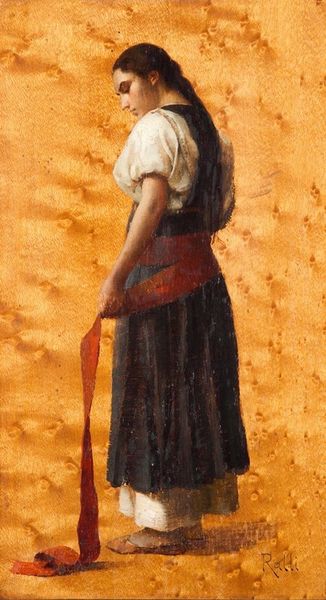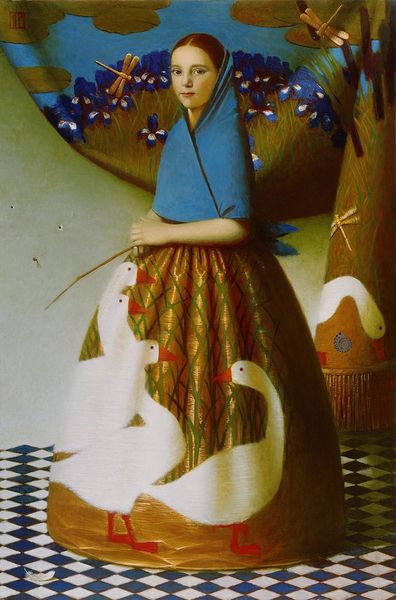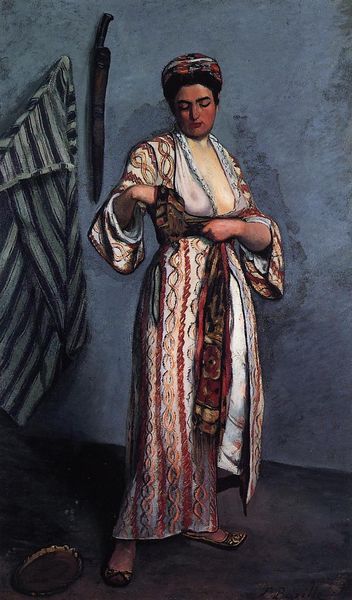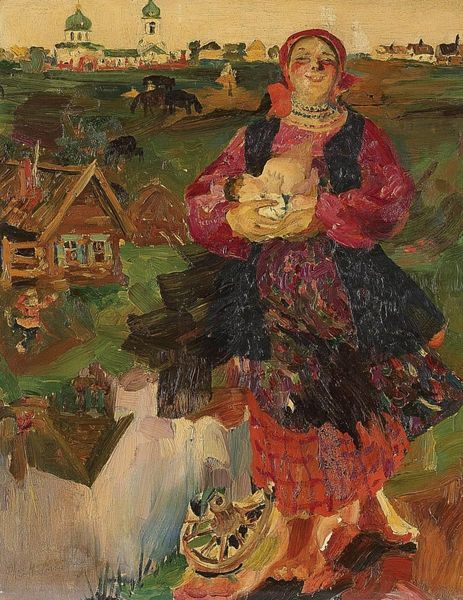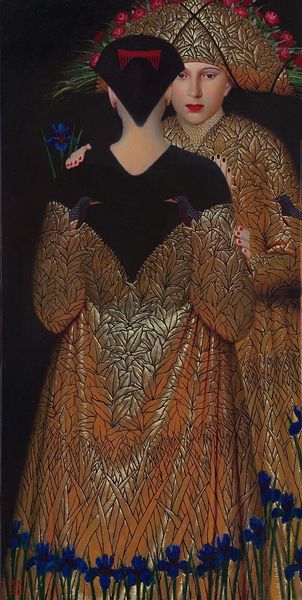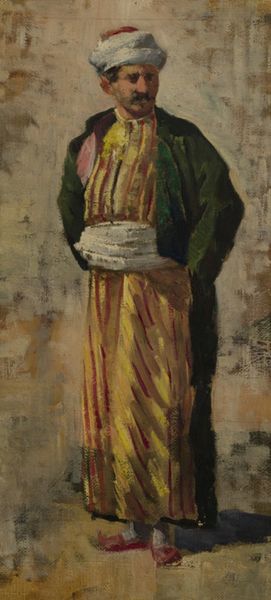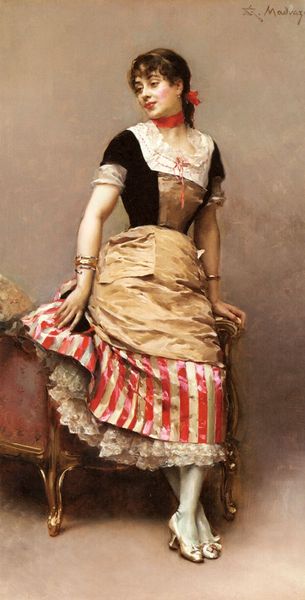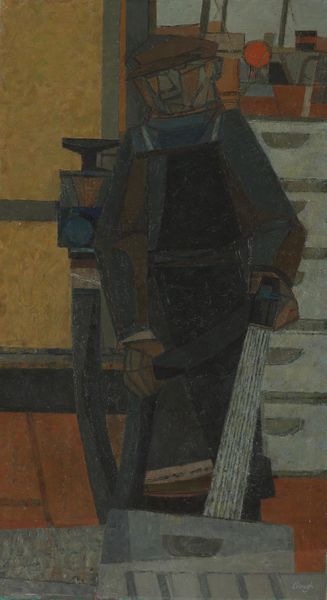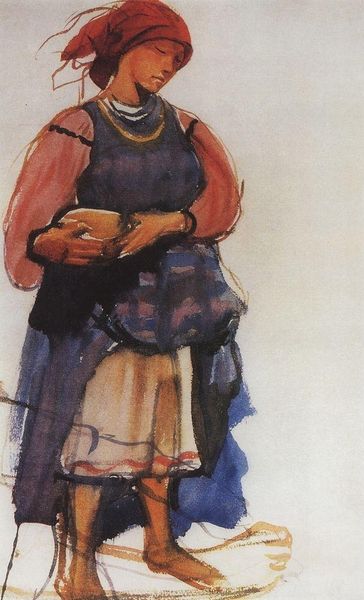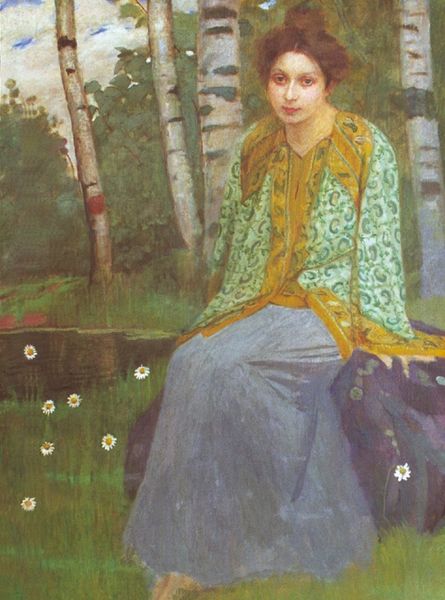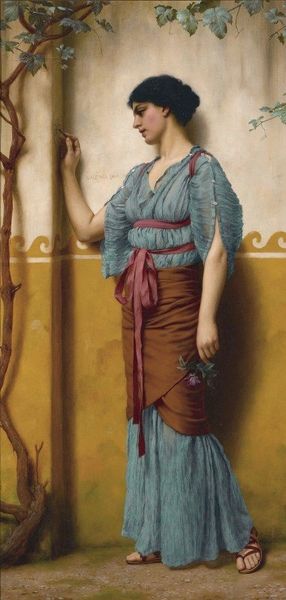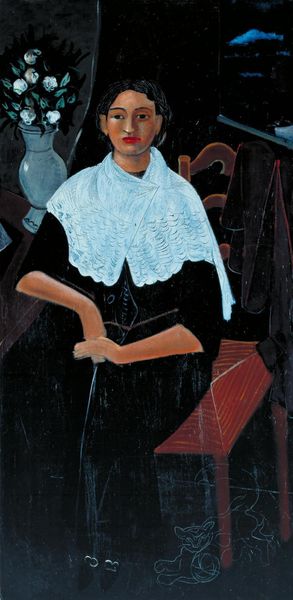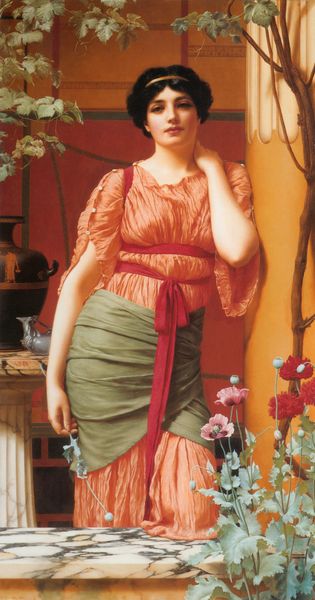
Copyright: Modern Artists: Artvee
Curator: Andrey Remnev's 2015 oil painting, "Wood Chips," immediately strikes me with its unexpected verticality and the somewhat perplexing scale relationships within the composition. Editor: The overwhelming feeling is one of reverie; it evokes a certain wistful feeling that’s almost cinematic. It's a strange combination of domesticity and longing, isn't it? Curator: Indeed. Let's begin with the foreground; a young woman in traditional dress is centrally positioned. Notice the flatness with which Remnev renders the wooden textures both in the house's corner structure and in the wood chips piled on the floor—juxtaposed with the detailed face and clothing. This invites an interesting analysis of surface versus depth. Editor: Those wood chips also echo the golden curls cascading down her apron, both being potent symbols of feminine creativity and industriousness. Consider how spinning wheels and wool often figure in similar contexts. Are these chips, perhaps, representative of unrealized potential, things discarded? Curator: It's quite interesting that you should frame it in this light! You can say the repetition of circular forms such as the chips themselves and patterns on the apron draw the eye in an ongoing pattern of semiotic relationships that further this impression. Then there is also this strange vantage point over the roof tops in the background. Editor: Those intense red roofs, layered and somewhat miniaturized, offer a world outside of domestic boundaries. That striking red evokes revolution and, of course, it hints at secret passions held. There are only glimpses through windows to another kind of existence just beyond her reach. What about her slightly sad expression? Does she even want to be liberated or does it speak of simple longing? Curator: Remnev deftly merges realism with elements that feel distinctly surreal. It seems to create internal tensions through conflicting spaces, compressed forms, and perspectival trickery. Editor: I am fascinated by the artist layering cultural memory with symbols—it reads both familiar and haunting. Considering the influence of Russian Avant-Garde and Surrealism it all suddenly clicks. Curator: Ultimately, Remnev's manipulation of form and texture generates ambiguity. This tension forces viewers to contemplate relationships and how social expectations may relate. Editor: It remains compelling, this little Russian reverie, after considering its web of signifiers and contradictions—beautiful and sorrowful, hopeful and resigned, but still, beautiful.
Comments
No comments
Be the first to comment and join the conversation on the ultimate creative platform.
